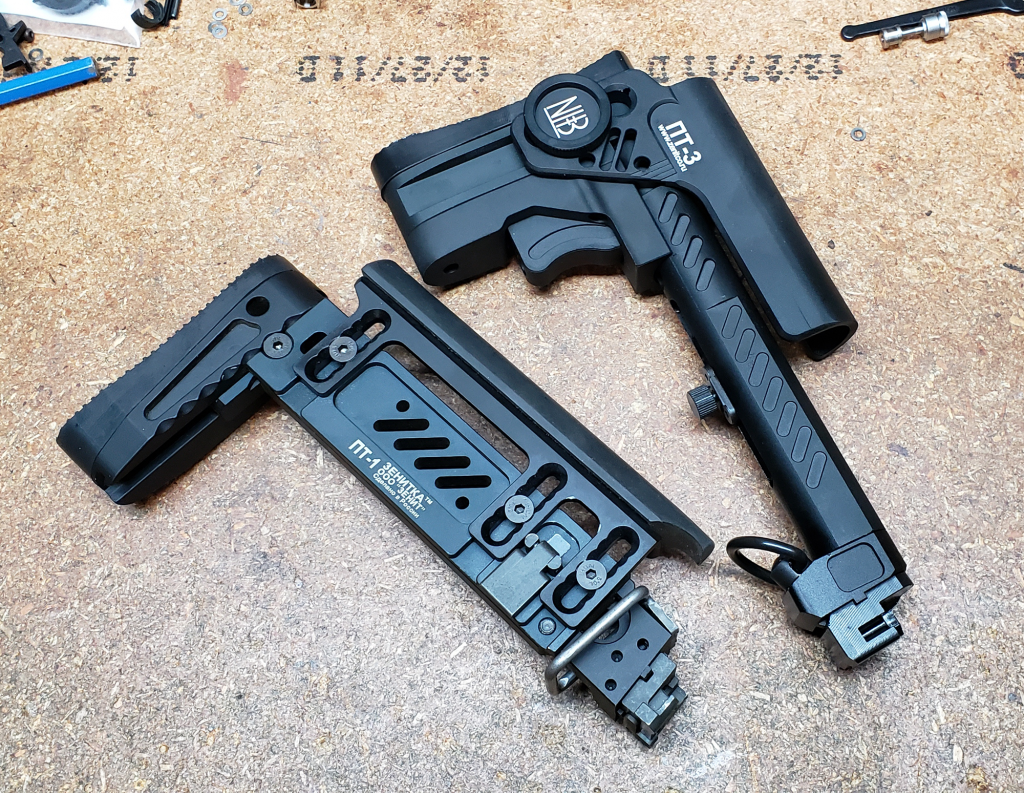
Recently I had opportunity to purchase the newly released TWI PT-3 stock, which is an Airsoft replica based on the real steel Zenitco PT-3. The PT series stocks are designed to fit any Kalashnikov style (and some variants such as the PP-19-01, Saiga-12, etc.) rifle with a folding stock hinge. There are adapters available that allow for attachment to fixed stock assemblies as well.
TWI is famous (and somewhat infamous) for manufacturing what are arguably considered some of the best Zenitco repro’s presently. The infamous part stems from the fact that they run nearly 80 – 85% of the cost of the real item; an obvious point of contention, and one that some would say means you should simply buy the real deal at that stage.
The PT-3 is the successor to the older PT-1, which has seen extensive service for some years now within many Russian units. Incidentally, the PT-1 has recently undergone an extensive modernization update (Gen. 2) which includes some weight reduction, updated sling attachments, redesigned buttplate and more. At present, there does not exist an Airsoft repro’ of the modernized PT-1, thus this review will not consider the potential merits of the new version when comparing it against the PT-3. The PT-1 in this review was manufactured by Zenimei and I have been using it fairly extensively for a little less than 2 years now.
Comparisons
There are some distinctive differences between the two stocks beyond the aesthetic realm. The PT-1 feels notably lighter in the hand when considered by itself, but has some very slight movement within the sliding extension. By contrast, the PT-3 feels like a tank, it’s heavy and superbly solid with no wobble. Of interest, both the TWI PT-3 and Zenimei actually weigh more than the real steel versions they emulate. I suspect this might be due to the grade of material used, though there may be dimensional differences too, perhaps.
For the weight conscious who feel every extra ounce = pain, this is something to keep in mind though. As a quick example: In present configuration with a B-10 handguard, RK-0 foregrip and the TWI PT-3, this LCT PP-19-01 clocks out at over 8 lbs 11oz (w/magazine). In comparison, a bone stock PP-19-01 comes in at 6 lbs 11oz (w/magazine).
| OEM Stock | Zenimei PT-1 | TWI PT-3 | |
| Weight: | 9oz (255.14g) | 16.95oz (481g) | 22.02oz (630g) |
| Length (max extended): | 9.5″ (25.4mm) | 11.75″ (298.45mm) | 9.75″ (247.65mm) |
| Length (retracted): | 9.5″ (25.4mm) | 7.75″ (200mm) | 7.75″ (200mm) |
| Cheek Riser (max height): | N/A | 1.5″ (38.1mm) | 1.5″ (38.1mm) |
| Retail Cost: | N/A | $145 | $235 |
In terms of pure adjustability and ergonomics, I feel the PT-1 has the edge. The buttpad can be adjusted vertically, whereas there is no adjustment on the PT-3. As well, the PT-1 has a longer possible length of pull, which may matter to shooters with large physiques. On the matter of which has the better adjustment system, I feel this again falls to the PT-1. The PT-1 uses a flip up latch that’s locked in place via a magnet. It’s relatively quick to flip it up (though a tad slippery), and draw the stock to the desired length and re-flip the lever closed. The PT-3 uses a large trigger-like button on the buttpad to make adjustments. However, the actual act of locking the stock in place is done via a large set screw, which must be loosened first before any adjustments can be made. This is not a very expeditious process. Furthermore, there’s nothing actually capturing the set screw, so it could potentially walk out or become easily lost. Additionally, by neglecting to use the set screw you can inadvertently collapse the extended stock by just leaning into it. It seems to be an oddly byzantine setup that could have been simplified by adopting an AR-15 style latch instead.
Lastly, in the case of the TWI, the fit of the sliding components is quite tight. it takes an effort to pull the stock open from its fully collapsed state. Even after disassembling, cleaning and lubing up the internal bits, it’s still quite stiff. Conversely, the PT-1 slides open effortlessly.
In stock configuration, the cheek riser on the PT-1 is superior to the PT-3 – despite the latter requiring no tools to adjust the height. Weight and funky adjustment aside, this is perhaps my main gripe with the PT-3 stock, or at least the TWI replica: the cheek riser is far too short. No matter how I adjusted the length, the edge of my cheek rests uncomfortably on the corner edge of the riser. I suspect if I were wearing some thick body armor, this issue would be mitigated as it would push the stock further out. But as is on a bare shoulder or against my Tactical Tailor X-Harness, it’s not especially comfortable right now. Zenitco fortunately offers an extended cheek riser that is relatively inexpensive. One wonders why this isn’t offered as standard fare on the TWI replica. I can’t really think of any reason why you would select the shorter riser as opposed to the longer, as even the possible weight difference would seem to be marginal. This just seems to be a design misstep to me.
The cheek risers on both stocks are removable if one wishes not to use them.

The rubber buttpad on the PT-3 is more concave than the flat profile of the PT-1. Both have excellent grip and will not slip off your shoulder easily. The one thing the PT-3 lacks that the PT-1 offers is the vertical adjustment of the buttpad and plate. This is not something I’d say I missed really; as generally speaking, once you’ve set it you pretty much leave it. The PT-1 is a better choice if you’re wearing a mesh-guard mask as you can drop the height of the stock by setting the buttpad at its topmost point.
I do feel the PT-3 has a better sling setup – or at least multiple options for slings. There are two QD sockets, and a rotating swivel in the more traditional place (for folding AK stocks at least). The latter is removable, though if retained, I would suggest adding thread locker to the screw to prevent it from working loose.
For testing purposes, I’ve mounted both stocks on my LCT PP-19-01. As with anything Airsoft, some fitting may be required. The pin from the PT-1 proved to work perfectly with the PT-3. However, on both stocks I did find that it was necessary to file a very small amount of material from the front of the piece that interacts with the stock latch. This was needed in order to allow the stock to fully latch in the non-folded position.
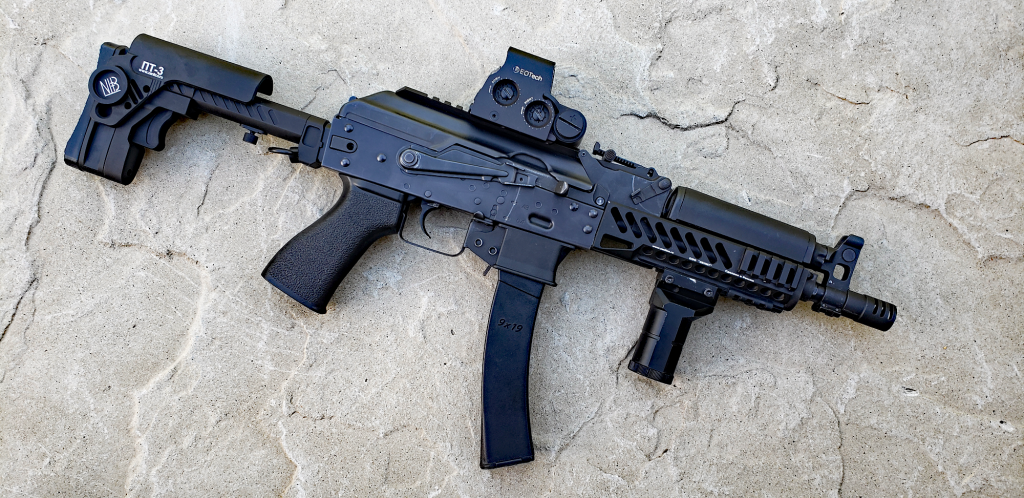
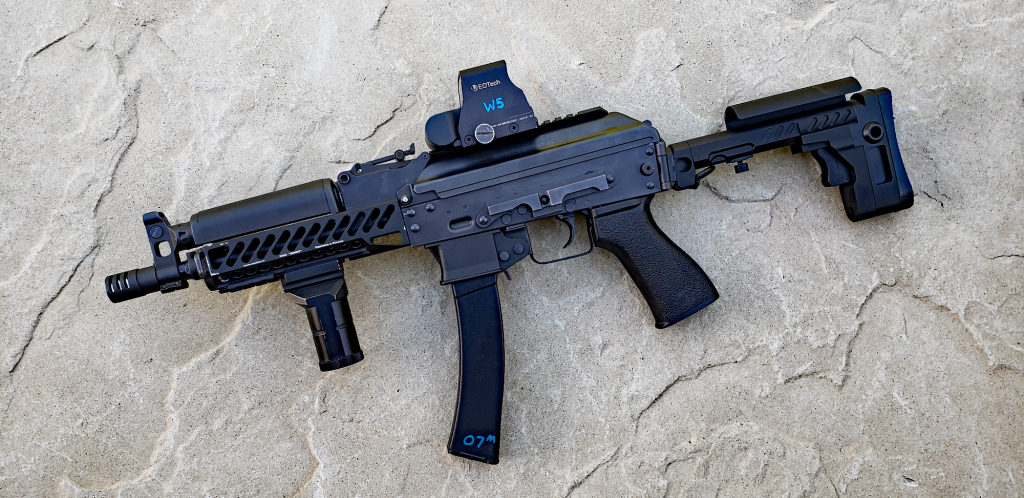
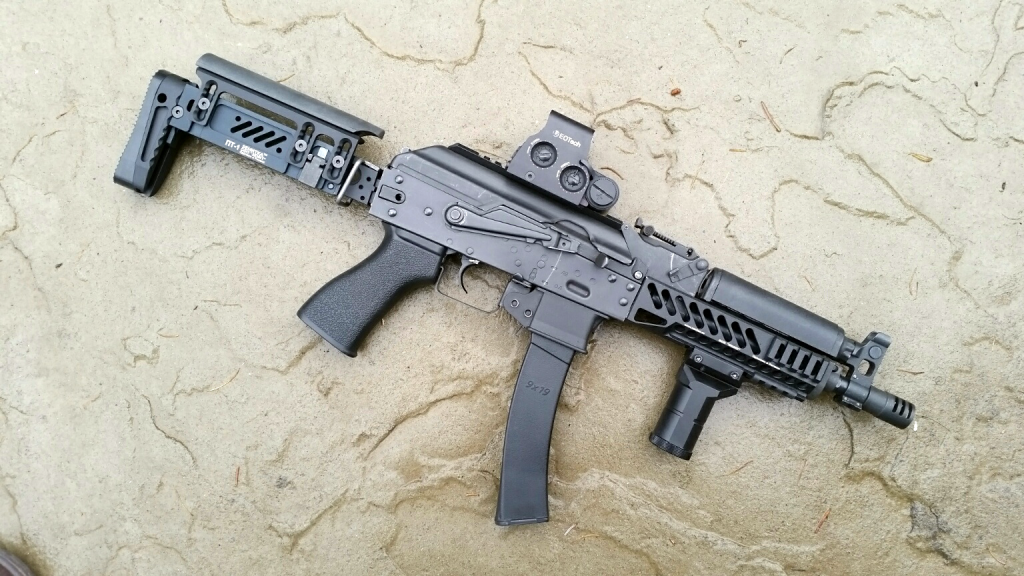
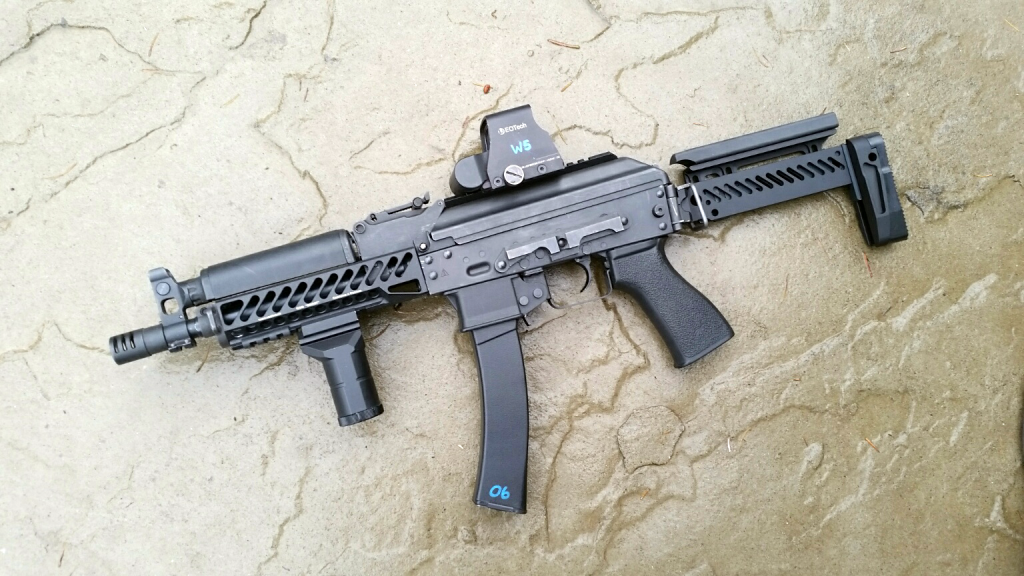
Conclusions
As much as I wanted to like the PT-3, the overall package just sort of fell flat for me. Some of the features felt like a step backwards, and ergonomically, it just doesn’t shine as good as the PT-1 does. Despite improved sling mounting options, a tool-less cheek riser and an albeit stronger lockup, the increased weight, more complicated LOP adjustment and other detraction’s would be enough to dissuade me from recommending it over the PT-1. This would be doubly so given the modernization improvements made to the newest PT-1’s.
TL:DR: It is my opinion that there is no reason to strongly consider the PT-3 unless you were basing your purchasing decision solely on aesthetics. In most other aspects, the PT-1 is going to be the superior choice for players looking to dress up their Kalashnikov based platform.